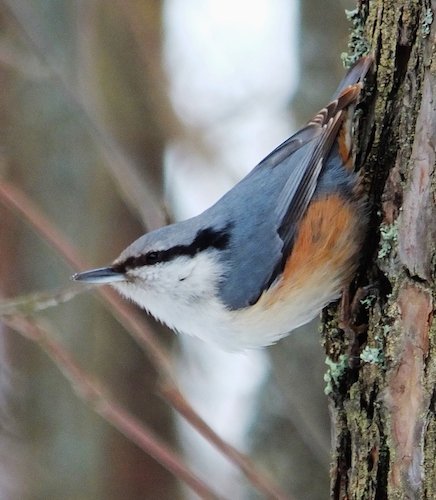Caucasus

Birding the Caucasus
The Caucasus is generally thought of as consisting of the Republics of Karachay-Cherkessia, Kabardino-Balkaria, North Ossetia, Ingushetia, Chechnia and Dagestan.
This region is not as large as many of the regions, but what it lacks in size it makes up for in its great multiplicity of landscapes. The northern part of its foothills are occupied by feather-grass steppe, and, therefore, typical steppe birds, such as Demoiselle Crane, can be found here. But the most interesting sites are to be found on the Great Caucasian mountain ridge. Dense deciduous forests are predominantly made up of nut-trees, cherry-plum trees, alder, ash and maple on the lowest level of mountainsides. The next level up is famous for its beech forests. There are a lot of vines, such as hop and grape, and dense bushes here, and sometimes it’s difficult to walk through these forests. At about 900m height deciduous forests give way to Pine, spruce and fir. Coniferous forests are especially rich in the mounting river valleys. There are not so many bird species here in comparison with broad-leaved forest, but you can find such specialities of coniferous woods as Crossbills, Bullfinches and Red-breasted Nuthatches. Above the forest zone, close to 2000m above sea level, the land of alpine meadows starts; the kingdom of grass and bushes, the most wonderful of which are juniper & rhododendron. Caucasian Blackcock, Caucasian Snowcock and Blue Rock Thrush can be found in this zone. On the highest peaks there is snow throughout the year. The best time for birding excursions in the Caucasus is the end of March, April and May, when most of plants are flowering, and birds are easily discovered.
-
Kavkazsky Reserve
InformationSatellite ViewAll altitudinal belts are represented in this territory, and consequently the avifauna is very rich. During a one-day excursion you can see bird communities from several different landscapes. The maximum species diversity and density of birds can be found in the lowest part of woodland zone, especially in river valleys. One of the specialities in low mountain forests is the Short-toed Tree Creeper, which never live higher than 400m above sea level and prefers forests with moss-covered trees. Other species of low mountain levels, such as Lesser Spotted Eagle and Turtle-dove, can also be seen. In spring and autumn near big rivers you can watch intensive migration of waterfowl, swallows, swifts and also falcons & other birds of prey, which are following them. Unusual carrion-feeding species, such as the Griffon Vulture, Bearded Vulture, Golden Eagle and Black Vulture breed on the high rocky steeps. Coniferous forests have more or less typical avifauna, but if you are interested in small birds, it’s possible to find here some attractive species, for example, Firecrest and Red-breasted Nuthatch. The high mountain bird community is distinct and varied. The most numerous residents of rhododendron bushes are Dunnock and Water Pipit. The characteristic species of Caucasus, such as Caucasian Blackcock and Caucasian Snowcock, can be easily found here. Rocks and stone lands are inhabited by species which include Alpine Chough, Black Redstart, Alpine Accentor and Wall Creeper. -
Teberdinsky Reserve
InformationSatellite ViewMore than 200 species of birds have been recorded in this territory. Species from European mixed forests, including Bullfinch, Tawny Owl & Green Woodpecker dominate in the woodlands. In addition, some taiga species, for example, Common Crossbills and Tengmalm’s Owl, can be found here. In the level where there are mountain meadows it is possible to find some interesting specialities: Bearded Vulture, Chough, Alpine Chough, Caucasian Grosbeak, Isabelline Wheatear, Crag Martin and many others. Along the Teberda River valley and above the Kluhorsky Pass lies the migration flyway of many birds, and the most spectacular are the large passage of predatory birds, such as Common Buzzard, Black Kite, Harriers and Honey Buzzard…. as many as 1500 can be seen passing through in a day.
-
Olga Batova
Ecological Travel Center - Moscow | info@ecotravel.ru
http://www.ecotravel.ru
-
BR Caucasian State Nature Biosphere Reserve
InformationSatellite ViewIn 2009, a Persian leopard reintroduction centre was created in Sochi National Park, where two male leopards from Turkmenistan are being kept since September 2009, and two females from Iran since May 2010. Their descendants will be released into the wild in the Biosphere Reserve. A pair of leopards were brought to the Sochi park in 2012 from the Lisbon Zoo in Portugal. In July 2013, the pair had a litter, the first Persian Leopard cubs known to be born in Russia in 50 years. The cubs will be released into the wild after learning survival skills from their parents, according to Natalia Dronova, the WWF-Russia species coordinator. -
NR Teberda
InformationSatellite ViewTeberda Nature Reserve is a strict ecological reserve located on the northern slopes of the western section of the Caucasus Mountains. It is the most visited nature reserve in the Russian Federation, with over 200,000 recorded in 2010. There are 46 species of mammals living on the territory, with 1,300-1,600 of the Caucasian ibex, which have large saber horns reaching 1 meter in length on old males. Bison have been reintroduced into the area after being exterminated in 1926; the reserve's wild bison numbered 32 as of 2015. Recently, the jackal has penetrated the territory and is now the most common predator.
-
2012 [04 April] - Julian Bell
ReportThe job was an inshore survey of two lines crossing the Black Sea from near Samsun in Turkey over to Russia. We stayed in a hotel onshore in the Russian holiday town of Arkipo Osipovka (Архи́по-О́сиповка) - a couple of hours drive from Krashnodar. We worked days on a small survey vessel, travelling to and from this vessel in a Rib. One of the commonest birds on the sea was Black-necked Grebe - with flocks of more than 20 seen at times. They were often quite vocal and were obviously getting prepared for the breeding season. Other grebe species seen were Great-crested Grebe (common) and a single Red-necked Grebe….
